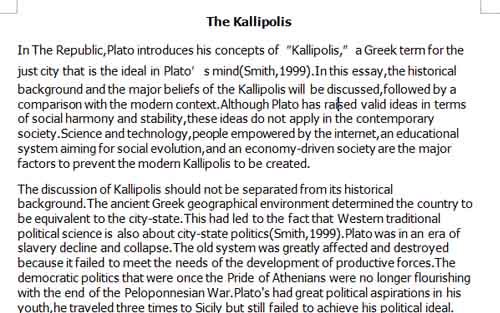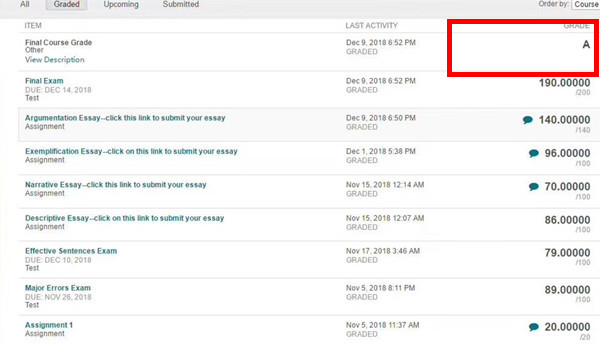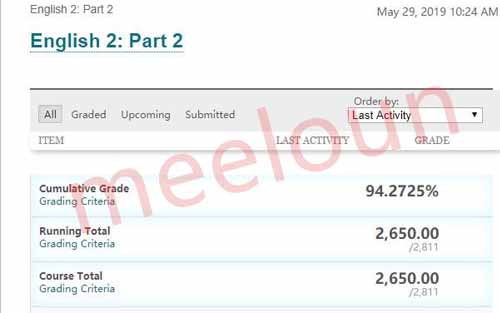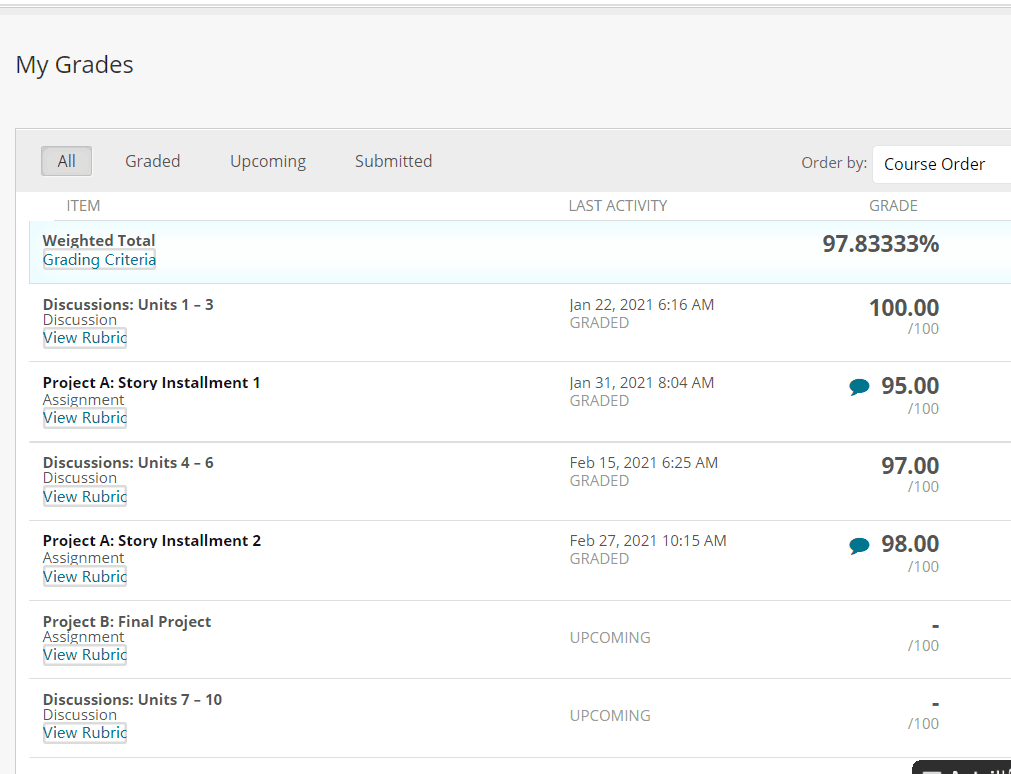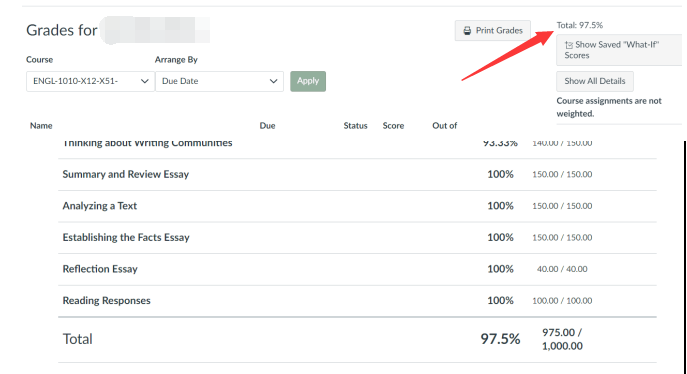本文是一篇市场营销Report代写范文,题目为:Marketing strategy comparison between H&M and Uniqlo,本报告主要针对快速时尚服饰品牌H&M和优衣库在提升产品销量方面的营销策略进行调查分析。所有讨论和分析的材料和信息都是从官方网站、新闻文章、期刊和第三方网站的二级来源收集的。
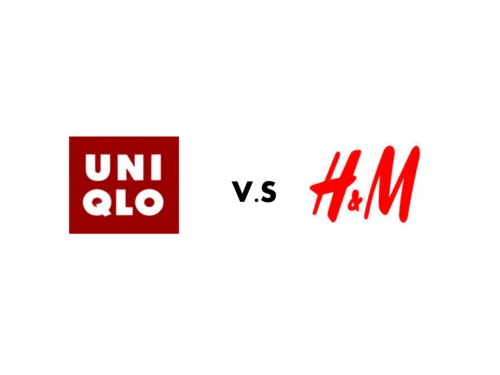
本报告讨论的两个主要营销战略是可持续发展战略和数字营销战略。这两种策略都受到快速零售消费者的强烈要求,并支持其在获得更好产品销售方面的重要性。这两家公司都使用了过去的营销策略进行了比较,例如H&M推出了有意识的可持续性收集,并在网上获得了强大的社交媒体意识,另一方面,优衣库实施了可持续的品牌战略和创新的数字营销战略,将人工智能纳入其移动应用程序购物体验。这两种策略的分析都表明,优衣库在通过其营销策略获得销售额方面更具竞争力。
此外,本报告还以优衣库最近在中国销售的KAWS系列产品为例,讨论了饥饿营销策略,以支持其当月零售额。建议其他快速零售品牌在其营销策略中纳入这一策略,以便在适当的时候促进产品销售。
Abstract
This report focuses on the investigated analysis of fast fashion apparel brand H&M and Uniqlo in aspect of their marketing strategies in increasing product sales. All materials and information discussed and analysed are collected from secondary sources available online from their official website, news articles, journals and third-party websites data.
The two main marketing strategies discussed in this report would be the sustainability strategy and digital marketing strategy. Both of this strategy was found highly demanded by fast retail consumers with supporting arguments of its importance in gaining better product sales. Both companies are compared using their past marketing strategies used such as H&M has launched Conscious Collection for sustainability and gained strong social media awareness online, on the other hand Uniqlo has implemented sustainable brand strategy and innovative digital marketing strategy with inclusion of AI in their mobile application shopping experience. Both strategies analysis has shown Uniqlo to be more competitive in gaining sales with their marketing strategy.
Besides, hunger marketing strategy is also discussed in this report with Uniqlo's recent example of KAWS collection sold out in China championing its retail sales of the month. It is suggested for other fast retail brands to incorporate this strategy in their marketing strategy to help boost product sales when appropriate.
Table of Contents
1. Introduction PAGEREF _Toc33395680 \h 4
2. Background PAGEREF _Toc33395681 \h 4
3. Sustainability PAGEREF _Toc33395682 \h 5
3.1. Sustainability of H&M PAGEREF _Toc33395683 \h 5
3.2. Sustainability of Uniqlo PAGEREF _Toc33395684 \h 6
3.3. Comparison of sustainability PAGEREF _Toc33395685 \h 6
4. Digital Marketing PAGEREF _Toc33395686 \h 6
4.1. Digital marketing of H&M PAGEREF _Toc33395687 \h 7
4.2. Digital marketing of Uniqlo PAGEREF _Toc33395688 \h 7
4.3. Comparison of digital marketing PAGEREF _Toc33395689 \h 8
5. Hunger marketing PAGEREF _Toc33395690 \h 8
6. Conclusion PAGEREF _Toc33395691 \h 9
7. Reference List PAGEREF _Toc33395692 \h 10
8. Appendices PAGEREF _Toc33395693 \h 13
1. Introduction
The great improvement of technology advancement globally has made a great impact in most industries including the fashion industry globally such as the creation of global e-commerce platforms and logistics servicing (Todeschini et al., 2017). This has made great opportunity to consumers in different market in making consumer choices and decision making in their fashion preference and purchase behavior (Sudha & Sheena, 2017). In the fashion industry, location and pricing has always been one of the major factors affecting the company’s sales and profit in the region with relation to its relationship with their consumers (Da Giau, 2019). But with the availability of technology, consumers are now able to compare designs and product prices across different location and region without worrying of purchasing boundaries geographically. Thus, it has made fashion brands to explore further on the challenges in affecting consumer behavior towards their brand and product.
With both organizations, H&M and Uniqlo being in the fast apparel fashion industry, multiple comparison on strategies, product differentiation and market positioning is widely discussed by marketers and marketing academicians from time to time. As both organizations are global branded companies, demonstrated successful result in both online and retails sales figures, the innovative and movements of their marketing strategies should be analyzed from time to time in order to gain meaningful learning and insights from the giant brand in the fashion industry.
This report focuses highly on the comparison between two main fashion brands in terms of their marketing strategy, which is H&M and Uniqlo. Their respective marketing strategy would be analyzed and discussed throughout this report, forming a final concluding statement on which brand has implemented more impactful marketing strategy in relation to increasing sales for the organization.
2. Background
Luxury fast fashion brands has rapidly facing challenges of the reduction in sales due to multiple events happening globally. For the past years, global expenditure has come to a downturn where retails are having slow growth rate or experiencing a reduction in sales (The World Bank, 2019). This might due to the economy instability of multiple economies such as US and China leading consumers to save more than spending their incomes. With the recent public health issue currently still undergoing in China and multiple other countries, with China most affected, Chinese consumers expenditure is expected to reduce tremendously this year affecting multiple industry globally.
H&M was founded by Erling Persson as a Swedish retail clothing company well known for its fast fashion clothing in multiple countries globally targeting to wide range of consumers including men, women, teenagers and children segments (Giertz-Mårtenson, 2012). Although the brand provides multiple segment offering, the company focuses highly on their major consumer market which is men and women with the age 18 to 45 years old (Shen, 2014). The company designs and manufactures fast fashion apparels and accessories available more than 300 stores around the world. But the giant fashion retailer has been slowing down in physical store expansion with closing more than 140 store in 2018 and reduction of new store opening planning (Charlton, 2020). The company has stated the increase of online retail has highly affected on their footfall in stores of the brand (H&M, 2017).
Uniqlo is originated from Japan and has widely expanded to most of the markets in the Europe region. With a company that has established more than 10 years, Uniqlo has built a strong global branding in association to their quality, affordability and fashionable products in consumer’s mind (Huang, Kobayashi & Isomura, 2014). Uniqlo aims to be one of the world largest clothing retailer this year with the expansion in US, China and online globally (Choi, 2011). With such, their brand and marketing strategy has always unique compared to its competitors where the brand offers unique functional performance fashion apparel with in-house fabric and innovative designs (Anwar, 2017). Their brand strategy has not changed for years thus formed the strong brand positioning in the market.
3. Sustainability
Fast fashion has always in relation to the consumer preference movement from time to time, adjusting the business products and operational direction in order to gain the most attraction from the consumer market (Li et al., 2014). With such, fast retail fashion brands such as H&M and Uniqlo had highly attend to the concept of sustainable fashion which shows strong demand from consumers. Sustainability has become one of the hot topic when it comes to fashion as reports showed that apparel industry are contributing to 4% of global waste each year which is equivalent to 92 million tonnes (Bird, 2018). With multiple reports affecting on consumers knowledge on environmental issues in relation to the fashion industry, demand for sustainable fashion brands has became highly important globally including the production process and retail sales process (Turker & Altuntas, 2014). With such demand, multiple brands has converted and transformed their brand process to be more environmental friendly or go fully sustainable as their brand message to the consumers such as usage of only organic cotton and fabric materials in the production of products and many more (Jung & Jin, 2014).
3.1. Sustainability of H&M
H&M has implemented wide range of sustainability marketing strategies in order to deliver the message to consumers. The brand has launched their first Conscious Collection back in 2011 which would include highly sustainable materials such as organic cotton and recycled polyester in the production of the products (Balch, 2013). This marketing campaign has shown high success with the expansion of the Conscious Collection in H&M stores globally with its own unique identified tag in stores. Although fast fashion retail has always been well known to get the cheapest manufacturer in order to gain price competitiveness thus sustainable manufacturing process has always been a huge issue in the industry (Li, Choi & Chow, 2015). Despite such challenges, H&M has initiated the go green campaign where the company would prioritize in working with manufacturers that complies with sustainable policies and waste disposal procedures, with the aim in achieving 0% non-sustainable manufactured products in 2021 (H&M, 2020). Such unique claims and strategies has gained high impact in the consumer market, boosting brand sales for their sustainable product line, Conscious Collection. Such marketing strategies has gain increase highly in sales supported by research stating that product labelled or associated with sustainability gains better sales efficiency in the current market (Gelski, 2019)
3.2. Sustainability of Uniqlo
In comparison to many other fast fashion retail brands in the market, Uniqlo has a better competitive advantage in terms of sustainability due to the brand identity from its core. The brand has developed their branding strategy on their quality and material usage for their products to be highly sustainable for many years, conveying the message to consumers on Uniqlo products is a method for them to improve life quality with simplicity and beauty (Agrawal, Atasu & Van, 2019). The brand has been developing clothes that are simple and stylish at the same time provide comfortability to its consumer globally. This had gain high sales volume from multiple consumer background ranging from college students to suburban soccer moms in multiple regions (Liu & Zhang, 2019). With such lead in the sustainable fashion industry among its direct competitors, the company is still improvising on their sustainable act and marketing such as the incorporation of sustainable in-store renovation including the reuse of old store materials and sustainable themed design for all stores globally (Macchion et al., 2018). Such unique marketing strategy in spreading the brand’s sustainability image has formed great advantage as the brand has form strong brand recall when it comes to green fashion product.
3.3. Comparison of sustainability
In comparison of both brands, H&M and Uniqlo has implemented its own unique marketing strategy in relation to the sustainability aspect of the business in order to attract current consumer market. But Uniqlo has deemed to better strategies in terms of sustainability marketing as the company has incorporated sustainable as one of their core competencies and brand message positioning from the start in entering fast fashion market. Besides, Uniqlo has shown better innovation in incorporating sustainable in the business with the involvement of in-store materials and decoration while H&M’s marketing strategy is still highly identical with other competitors in the market showing low differentiation strategy.
4. Digital Marketing
Digital marketing strategy is commonly used by fashion brand to attract new consumers and retain current consumers, redirecting them to the company’s e-commerce website using digital marketing strategies (Ozuem & Azemi, 2017). Thus, digital marketing strategy tends to be highly consumer behaviour oriented in marketing messaging and segmentation targeting. As for the luxury fashion industry, branding and marketing are always connected and interrelated with each other as luxury brands depends relatively more on their brand image in gaining their competitive position in the market with its competitors (Atwal & Williams, 2017). Fashion brands had also started experimenting their marketing strategies with the involvement of AI & VR technologies, trying different methods to attract consumers in engaging with the brand digitally but not instore (Campbell et al., 2019). These multiple trends show the importance of H&M and Uniqlo in using digital marketing as their core marketing strategy communicating their brand message with consumers.
4.1. Digital marketing of H&M
H&M has already explored into multiple digital marketing platforms including official e-commerce website & social media sites such as Facebook, Instagram & Youtube. The current messaging and visuals show tendency on posting behind the scenes of photo shoots, new seasonal product releases and inspirational outfit contents. It can be concluded that the social media marketing of H&M revolves around the spread of fashion style of the brand to their consumers.
Rigby (2010) has reported the initial stage of H&M where the brand had only launched their online e-commerce platform in 2010 and stabilized the platform only in 2013, considered as a late joiner in the market compared to its competitors. Despite with the late action in expanding the business towards digital platform, the company has caught up with other brands in short period of time, starting to gain stable online sales for the brand every month.
H&M has collected a large amount of social media audiences such as 37 million likes on Facebook, 33 million followers on Instagram and 8.4 million on Twitter (Charlton, 2020). The best thing of the brand’s social media strategy is that the brand has made country-specific social media accounts enabling the brand to develop and cater content specific messages to different audience varieties (Kang & Kim, 2017). But the core social media strategy surrounds on the company’s product showcasing product launches, upcoming special collections and promotional messages. This has shown the company failure in utilizing its social media stability to engage with their audience instead, as social media platforms are highly proven best to engage brands with consumers, develop strong brand relationship in the market (Kim & Drumwright, 2016).
4.2. Digital marketing of Uniqlo
Uniqlo has used the common digital marketing strategies that is currently used by all other competitors such as own e-commerce application, e-commerce website and multiple social media platforms (Liu & Zhang, 2019). Although in comparison to other brands such as H&M, Uniqlo has relatively less followers on social media, the brand has explored multiple digital marketing strategy in order to better position themselves in the digital market of consumers online. The Japanese clothing retailer has launched their AI-powered assistance integrated in their own mobile pap in order to provide between product recommendation to consumers as personal in-store guide for fashion outfits (Wiggers, 2018). The app has also designed and enhances in order to show more personalized products that the consumer might need tailoring the in-app recommendation page. Such usage of mobile application as digital marketing strategy is not new in fast fashion retail brands but the integration of AI in order to enhance shopping experience would be one of the pioneers available in the industry.
On the other hand, the brand has also capture on the importance of innovativeness and excitement consumer needs from the market where consumers tend to chase for fashion which is limited edition and uniquely available in the market (Yi, 2016). Thus, Uniqlo has started to launch multiple fashion designer apparels in-store to different market. Different from H&M, Uniqlo has collaborated with multiple designers and launched products mostly towards the niche market such as Pokémon, KAWS and Marimekko. All these characters and brands are highly different from fast retail collaboration design providing unique positioning and high differentiation of the brand with its competitors (Huang, Kobayashi & Isomura, 2014). Uniqlo has also cater its needs of such special edition apparel that would be available in selected markets only, causing the hype of consumers feeling that such design is rare and unique in other markets (Choi, 2011).
4.3. Comparison of digital marketing
Despite with the multiple digital marketing strategy done with company’s platforms available such as social media platforms, H&M has not demonstrated the brand in a more innovative way in competing with the competitors in the market. With the innovative design Uniqlo launches every season in relation to hot topics and characters in the mass or unique market, Uniqlo’s marketing strategy has highly demonstrated on their effort in engaging with consumers using innovation and unique designs available. With the same marketing strategy of H&M every season such as massive designer collaboration and messy retail price drop sales every season, H&M has more room for improvement in terms on their digital marketing strategy in gaining better sales for the company.
5. Hunger marketing
Hunger marketing is one of the unique marketing strategies found during the analysis of H&M, Uniqlo and other fast fashion brands in the market. Hunger marketing strategy refers in the manipulation of consumer emotion psychologically to increase consumer desire to purchase with changes of purchasing influencing factors. This was seen in the debut launch of recent limited-edition designer clothes of Uniqlo, KAWS in China market. Multiple news has reported that this specific limited-edition designing clothes has made huge movement in shopping malls across China with consumers battling over with products for purchase. This marketing strategy was done with Uniqlo successfully manipulated consumer’s mentality of limited quantity products available and peer influence effect (Yiran, 2019). Such successful strategy has made China market to achieve its first record top sales of the months in Uniqlo’s past marketing campaigns. The company has combined both online strategy and influencer strategy before the product launch offline and online, creating an intense purchasing environment making consumers think that they would not want to miss such product launch.
With such study available happened just recently by Uniqlo, it is recommended for other fast retail fashion brands including H&M to attempt in duplication or enhancing such hunger marketing strategies in their future marketing campaigns in order to boost sales in certain market or for certain product campaigns.
6. Conclusion
Concluding from the analysis of both companies above, it can be said that Uniqlo has a better marketing strategy in terms of boosting sales form consumers. The report has involved multiple discussion of marketing strategies done by both well-known fashion brands without the restriction of certain market geography. As the companies are in the fashion retail industry, the profitability margin is commonly known to be lower in such industry due to great competitiveness and global e-commerce apparel expansion. Thus, both companies have implemented its respective innovative and strategic marketing strategies such as sustainability branding and digital marketing as their communication tool in reaching out to consumers. Such effort comes with a common goal which is achieving profitability by increasing the sales volume of the organization’s product. This is shown with their effort in enhancing consumer shopping experience and creating strategies that would create purchase intention in the market.
从以上两家公司的分析可以看出,优衣库在提升消费者销售方面有着更好的营销策略。这份报告对两个知名时尚品牌在不受特定市场地域限制的情况下所采取的营销策略进行了多次讨论。由于这些公司都是从事时尚零售业的,由于其强大的竞争力和全球电子商务服装扩张,这类行业的利润率通常较低。因此,两家公司都实施了各自的创新和战略营销战略,如可持续发展品牌和数字营销,作为他们接触消费者的沟通工具。这种努力有一个共同的目标,即通过增加组织产品的销售量来实现盈利。这表现在他们努力提高消费者的购物体验和创造策略,从而在市场上创造购买意向。
Multiple innovation of the company in being sustainable not only in manufacturing production but also in-store renovation and materials has shown the increase demand of sustainable organizations has impact both companies. Besides, the brand marketing message of Uniqlo has highly demonstrated the differentiation of the brand and product with its competitors providing a distinctive advantage of the company in the market today. Finally, the successful usage of hunger marketing strategy of the brand was rarely seen by other fast retail fashion brands including H&M has successfully implemented by Uniqlo. Thus, it is recommended that other brands should consider incorporating such strategy into their campaign strategy planning and execution when suitable.
公司在可持续发展方面的多重创新不仅体现在制造业生产上,而且体现在商店改造和材料上,这表明可持续发展组织的需求增长对两家公司都产生了影响。此外,优衣库的品牌营销信息高度体现了优衣库品牌和产品与竞争对手的差异化,为优衣库在当今市场提供了鲜明的优势。最后,该品牌饥饿营销策略的成功运用在其他快速零售时尚品牌中并不多见,包括优衣库成功实施的H&M。因此,建议其他品牌在合适的情况下考虑将此类战略纳入其活动战略规划和执行中。
7. Reference List
Agrawal, V.V., Atasu, A. & Van Wassenhove, L.N., 2019. OM Forum—New Opportunities for Operations Management Research in Sustainability. Manufacturing & Service Operations Management, 21(1), pp.1-12.
Anwar, S.T., 2017. Zara vs. Uniqlo: Leadership strategies in the competitive textile and apparel industry. Global Business and Organizational Excellence, 36(5), pp.26-35.
Atwal, G. & Williams, A., 2017. Luxury brand marketing–the experience is everything!. In Advances in luxury brand management (pp. 43-57). Palgrave Macmillan, Cham.
Balch, O., 2013. H&M: can fast fashion and sustainability ever really mix. The Guardian, 3.
Bird, J. 2018. Fashion's Dirty Little Secret And How It's Coming Clean. Forbed, 9 September. Retrieved on 20 Feb 2020 from https://www.forbes.com/sites/jonbird1/2018/09/09/fashions-dirty-little-secret-and-how-its-coming-clean/#6b7a895f1771.
Campbell, C., Sands, S., Ferraro, C., Tsao, H.Y.J. & Mavrommatis, A., 2019. From data to action: How marketers can leverage AI. Business Horizons.
Charlton, G. 2020. What’s the problem with H&M’s online strategy?. The UK Domain, 14 Jan. Retrieved on 20 Feb 2020 from https://www.theukdomain.uk/whats-the-problem-with-hms-online-strategy/.
Choi, E.K., 2011. Paradigm innovation through the strategic collaboration between TORAY & UNIQLO: evolution of a new fast fashion business model.
Choi, E.K., 2011. The rise of Uniqlo: Leading paradigm change in fashion business and distribution in Japan. Entreprises et histoire, (3), pp.85-101.
Da Giau, A., Foss, N.J., Furlan, A. & Vinelli, A., 2019. Sustainable development and dynamic capabilities in the fashion industry: A multi‐case study. Corporate Social Responsibility and Environmental Management.
Gelski, J. 2019. Sustainable product market could hit $150 billion in U.S. by 2021. Food Business News, 01 October. Retrieved on 20 February 2020 from https://www.foodbusinessnews.net/articles/13133-sustainable-product-market-could-hit-150-billion-in-us-by-2021.
Giertz-Mårtenson, I., 2012. H&M–documenting the story of one of the world's largest fashion retailers. Business history, 54(1), pp.108-115.
H&M, 2017. Annual Report 2017. H&M. Retrieved on 20 Feb 2020, from https://about.hm.com/content/dam/hmgroup/groupsite/documents/en/cision/2018/01/2110334_en.pdf.
Huang, P.Y., Kobayashi, S. & Isomura, K., 2014. How UNIQLO evolves its value proposition and brand image: imitation, trial and error and innovation. Strategic Direction.
Huang, P.Y., Kobayashi, S. & Isomura, K., 2014. How UNIQLO evolves its value proposition and brand image: imitation, trial and error and innovation. Strategic Direction.
Jung, S. & Jin, B., 2014. A theoretical investigation of slow fashion: sustainable future of the apparel industry. International journal of consumer studies, 38(5), pp.510-519.
Kang, J.Y.M. & Kim, J., 2017. Online customer relationship marketing tactics through social media and perceived customer retention orientation of the green retailer. Journal of fashion marketing and management: an international journal.
Kim, E. & Drumwright, M., 2016. Engaging consumers and building relationships in social media: How social relatedness influences intrinsic vs. extrinsic consumer motivation. Computers in Human Behavior, 63, pp.970-979.
Li, W.Y., Choi, T.M. & Chow, P.S., 2015. Risk and benefits brought by formal sustainability programs on fashion enterprises under market disruption. Resources, Conservation and Recycling, 104, pp.348-353.
Li, Y., Zhao, X., Shi, D. and Li, X., 2014. Governance of sustainable supply chains in the fast fashion industry. European Management Journal, 32(5), pp.823-836.
Liu, Y. & Zhang, T., 2019, June. Research on Digital Marketing Strategies of Fast Fashion Clothing Brands Based on Big Data. In 2019 34rd Youth Academic Annual Conference of Chinese Association of Automation (YAC) (pp. 552-556). IEEE.
Liu, Y. & Zhang, T., 2019, June. Research on Digital Marketing Strategies of Fast Fashion Clothing Brands Based on Big Data. In 2019 34rd Youth Academic Annual Conference of Chinese Association of Automation (YAC) (pp. 552-556). IEEE.
Macchion, L., Da Giau, A., Caniato, F., Caridi, M., Danese, P., Rinaldi, R. and Vinelli, A., 2018. Strategic approaches to sustainability in fashion supply chain management. Production Planning & Control, 29(1), pp.9-28.
Ozuem, W. & Azemi, Y. eds., 2017. Digital Marketing Strategies for Fashion and Luxury Brands. IGI Global.
Rigby, C. 2010. H&M online arrives in the UK. Internet Retailing, 17 Sep. Retrieved on 20 Feb 2020, from https://internetretailing.net/industry/industry/hampm-online-arrives-in-the-uk-6620.
Shen, B., 2014. Sustainable fashion supply chain: Lessons from H&M. Sustainability, 6(9), pp.6236-6249.
Sudha, M. & Sheena, K., 2017. Impact of influencers in consumer decision process: the fashion industry. SCMS Journal of Indian Management, 14(3), pp.14-30.
The World Bank, 2019. GDP Ranking. The World Bank. Accessed on 20 Feb 2020, from https://datacatalog.worldbank.org/dataset/gdp-ranking.
Todeschini, B.V., Cortimiglia, M.N., Callegaro-de-Menezes, D. & Ghezzi, A., 2017. Innovative and sustainable business models in the fashion industry: Entrepreneurial drivers, opportunities, and challenges. Business Horizons, 60(6), pp.759-770.
Turker, D. and Altuntas, C., 2014. Sustainable supply chain management in the fast fashion industry: An analysis of corporate reports. European Management Journal, 32(5), pp.837-849.
Wiggers, Kyle. 2018. Uniqlo launches its own digital shopping assistant. Venture Beat, Aug 1. Retrieved on 20 Feb 2020, from https://venturebeat.com/2018/08/01/uniqlo-brings-its-digital-shopping-assistant-to-the-u-s/.
Yi, Z., 2016. Are fashion retailers creative? Evidence from Uniqlo, Asia's leading fashion brand.
Yiran, Z. 2019. Two brands are better than one for fashionable young Chinese consumers. China Daily, October 7. Retrieved on 20 February 2020 from https://www.chinadaily.com.cn/a/201910/07/WS5d9aa0caa310cf3e3556ef06.html.
以上就是本篇关于H&M与优衣库营销战略的report代写范文全部内容,欢迎阅读,范文内容和格式仅供留学生参考学习,不得抄袭,如有report代写需要,请咨询网站客服,我们将为大家提供高质量原创代写服务,请认准我们的官方网站:www.emwchinese.com




